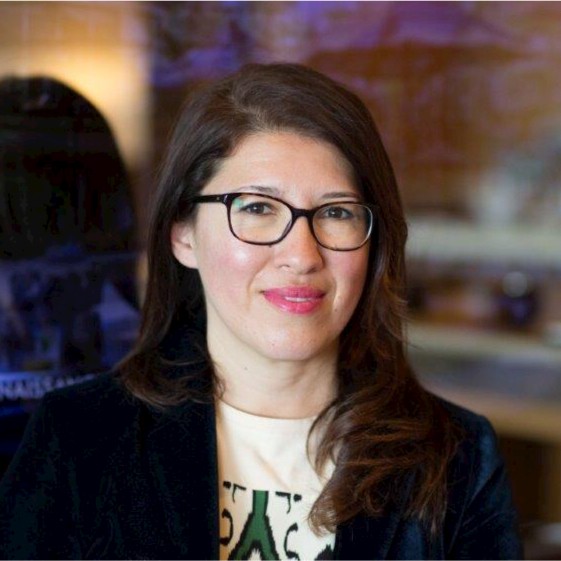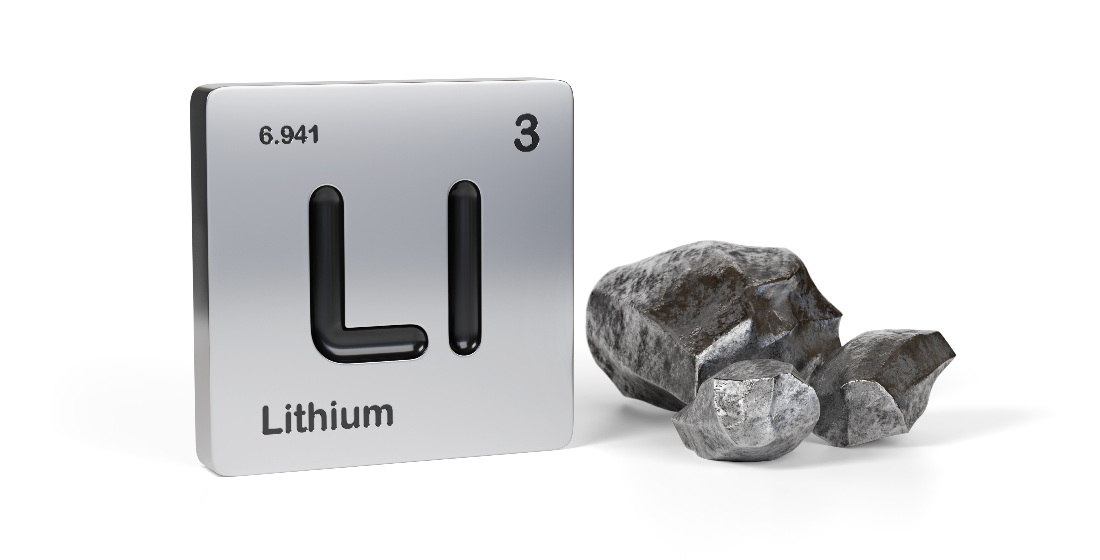TFP: The paths less travelled with EBRD’s Makhmudova
The EBRD’s Trade Facilitation Programme continues its success and in no small measure that is down to its team. Kamola Makhmudova reflects on her decade as lead banker of TFP, and users of the programme discuss its continued importance.

Kamola Makhmudova, senior banker of the European Bank for Reconstruction and Development’s (EBRD) Trade Facilitation Programme (TFP) has had time to reflect before she moves on to her next challenge at EBRD. On July 17, 2014, flight MH17 carrying 283 passengers was targeted by a Russian-made Buk missile over eastern Ukraine. Makhmudova landed in Ukraine just before that happened. “You start to perceive the world in different ways,” she says. “You’re not just watching this on the news or reading the papers, you actually visit these banks and rub shoulders with the larger issues.”

Makhmudova has had a decade-long tenure at the TFP, which was set up in 1999 and has become the EBRD’s biggest trade programme, witnessing exponential growth and widening geographical reach. She joined the TFP upon invitation from Rudolf Putz, EBRD’s deputy director financial institutions and TFP’s head. As she moves into her next role at EBRD, she looks back at her adventure with TFP.
In 2020, the TFP supported the financing of more than €3.3 billion of foreign trade – a record annual volume, amid the COVID-19 pandemic. As well as its evident success, TFP has been by far “the most challenging but exciting” journey Makhmudova has been on, she says.
The TFP initially set out to promote foreign trade to, from and within the EBRD regions offering a range of products to facilitate trade, including guarantees and trade-related cash advances. By 2006, EBRD was also providing facilities via TFP in countries across North Africa, and many local financial institutions were able to leverage the benefits of the programme. After the 2008 global financial crisis, this need to bridge the gap between what risks banks were willing to support amid Basel II and III regulation became even more evident and correspondent banking networks contracted.
Stepping into the correspondent banking gap
TFP takes most of the risk banks face for enabling access and facilitating trade finance. Makhmudova highlights the need for thorough due diligence to ensure processes are rigorous enough to meet the EBRD’s own criteria. Though costly to conduct such in-depth due diligence, Makhmudova explains the reward comes in terms of very low claims. “Under the programme we have supported more than 27,000 transactions for €22 billion with just two claims that were restructured, meaning no losses over a period of 20 years in relatively high-risk jurisdictions,” she says.
Makhmudova acknowledges the challenges that come with using trade finance instruments, de-risking and lending where banks do not have the appetite. Development banks, EBRD included, have played a pivotal role in filling the gap where correspondent banking has broken down.
How does she view commercial correspondent banking networks amid increased regulation and how does she think development banks will have to intervene in the future? “Banks were unwilling [to provide trade facilities] given their role in having to police payments with regards to KYC & AML [Know Your Customer and Anti-Money Laundering regulations], which they were never designed to do. They are merely service providers to make a payment,” she argues.
Compliance risk and increased regulation have had an impact on import and export trade financing. How has EBRD’s TFP sat alongside European banks’ own correspondent networks and how do European banks view TFP?
The bank perspective on TFP
“EBRD’s TFP and our correspondent network were simply the perfect match at the right time,” says Hans-Jörg Krohn, Regional Head, Financial Institutions – CIS at Commerzbank. “At the start of TFP, we had a vast correspondent banking network - much bigger than today. Not all banks were top tier, many were small banks, often in small countries, where TFP saw the highest demand.
Since then, Commerzbank, like others, has had several rounds of streamlining the network. It was mooted that this would negatively impact our role with EBRD, but this has proved unfounded. Many large banks are experiencing the same challenges of network constraints, and Commerzbank managed to maintain its position as an important player in international trade finance.”
According to Krohn, trade finance is also impacted under Basel III/IV regulation, which make it more costly from a capital allocation point of view. "This is difficult for banks to stomach,” he adds. “A development bank’s guarantee (from the likes of EBRD) is a top-rated collateral that lowers the capital and Risk Weighted Assets (RWA) impact of the underlying transactions. TFP enables us to increase trade finance volumes in difficult markets, and this capital aspect makes it even more attractive.”
Challenges inevitably come with the breakdown in correspondent banking for importers and exporters in emerging markets such as Kyrgyzstan, a small territory with the lowest GDP in Central Asia. “They [Kyrgyzstan] were heavily ‘de-risked’ with almost no correspondent bank accounts, meaning Kyrgyz importers are now under higher risk as they must pay and then pray that they receive their goods,” says Makhmudova. The need for facilities like the TFP exposes how this so-called de-risking, in fact, can create higher levels of risk or dismiss already poor countries, excluding them financially by hindering their accessibility to markets.
Positive impact on emerging markets
A good example of TFP’s success in emerging markets is its involvement with Ukreximbank, the state export-import bank of Ukraine. Since 2007, when Ukreximbank joined the EBRD TFP, it has realised overall 403 projects under the umbrella of the TFP with a total value of over $1.1 billion in various industries, including machinery building, food processing, automobile, agriculture, construction, aircraft leasing, green energy, etc.
“EBRD has always played a crucial role during turbulent times and successfully supported foreign trade of Ukraine through its TFP, covering local risks and providing financing to local banks,” says Olexander Shchur, board member at Ukreximbank. “Ukreximbank, being one of the leaders of trade finance and documentary business in Ukraine and one of the major partners of EBRD in Ukraine under TFP, has therefore substantially strengthened its ability to provide trade finance and guarantee products for its clients, keeping channels of trade open even in the most difficult times.”
COVID-19 challenges and crisis support
Makhmudova says that having a robust infrastructure at EBRD has been vital to face the additional challenges of the COVID-19 pandemic that has impacted all sectors globally. Highly trained bankers and a wide network in each country has meant due diligence could be conducted through resident offices upholding the EBRD’s high standards. Unsurprisingly, the ongoing pandemic has resulted in a surge of demand for support from the TFP resulting in that record amount funded under the resilience framework as part of the EBRDs coronavirus solidarity package.
“We expect a significant and sharp recovery in trade (which already showed an increase in the first half of this year, exceeding the pre-Covid level). In accordance with the WTO estimates, the volume of merchandise trade globally is expected to increase in 2021 by 8.0%. The question is how sustainable such growth will be in the medium term, but we believe that EBRD has all the ammunition to play a major role in such recovery, considering its significant experience in supporting international trade, especially in developing countries, during global crises,” says Shchur at Ukreximbank.
The TFP often goes beyond its mandate to support those impacted through crises. “During the pandemic lots of livelihoods were not supported by the government, particularly the arts,” observes Makhmudova. Recognising the hardships, EBRD provided opportunities to boost morale and organised paid virtual performances, which served as a lifeline to independent theatres hit by the pandemic.
Anticipating the digital future
As long ago as 2010 discussions began around the in-person workshops that the TFP ran on trade finance and a decision was made to digitise the content via an e-learning platform. Back then, the prospect of digitisation was still very foreign to many, yet the supranational bank overcame the security and site compatibility challenges to create this now widely used e-learning platform.
Initially, the plan was to train 300 students in three years. However, the accessibility of the e-learning platform, its low cost and ability to significantly improve students’ English, led to the plan to train 300 students being met in the first nine months. Makhmudova then started raising more donor funds to assist the continuity of the e-learning platform, which now after 10 years boasts approximately 9000 students from 185 banks in 36 countries and is still growing.
The TFP is constantly bridging the gap for commercial banks to give back and build capacity for the future of trade finance through education and becoming less solely profit orientated. The e-learning platform now offers competitive secondment and internship opportunities at Swiss and German banks for the 25 highest achievers in each cohort. Graduates of the programme have gone on to hold senior roles as global heads in trade finance.
Improving training, compliance and reporting can lower the costs for commercial banks. “The future is digital, digitalisation and cloud-based technologies will take over given the potential for much better KYC, thorough checks and faster, cheaper payments,” says Makhmudova.
“Digitalisation is a huge issue for trade finance” adds Krohn at Commerzbank. “We have been talking about the technological challenges it involves for decades. Some notable initiative failed, most recently BPO (Bank Payment Obligations) from SWIFT. Now we see promising new projects to digitise trade finance via DLT. These projects are driven by Fintechs and several big banks. Everyone involved in trade finance sees a very promising future here, and those around the table are keen to advance these projects at the fastest pace possible.”
Ambitions of being a green bank
EBRD made a formal announcement in June 2020 to become a majority ‘Green Bank’ by 2025. Makhmudova says this is an ambitious target, but the bank has already begun taking meaningful steps in that direction.
On July 1, 2021, the EBRD exited from most fossil fuel, oil, gas, and pipeline exploration investments. Becoming a green bank and practicing ‘green trade’ will be a challenge for some countries. As the only international financial institutions providing trade finance through the ongoing energy crisis to Lebanon, some exits are going to have to be more gradual. There are also efforts to monitor EBRD’s partner banks through incentives such as better loan terms to those importing equipment to improve performance and reduce water use.
Makhmudova is not shy about her personal commitments to ESG, labelling herself as a “green activist”, going beyond her remit. With the UNs SDGs weighing heavily on the global agenda she is keen to share how the EBRD champions diversity and gender inclusion. There are more senior women in trade finance within the EBRD’s countries of operation than there are senior men.
Makhmudova’s 10-year tenure as director of the TFP has been inspirational. “Kamola is a quintessential entrepreneur within EBRD, for growth innovation and client service. Creating training, getting them recognised by ICC, creating a network of partners. She is clearly well suited to being a pioneer,” says Francis Malige, managing director, financial institutions at EBRD.
Makhmudova, the brains behind ‘Trade Exchange Magazine’, which she describes as “the Grazia of trade finance” – and only she could manage to fit hip-hop and trade-finance into the same interview – will be missed at TFP. As she prepares to hand over the reins as director of the TFP, we wish her all the best for her new role as country head of the EBRD in Baku.
Kamola Makhmudova was interviewed by Jessica Brown, with additional reporting from Daniel Sherriff at Uxolo




